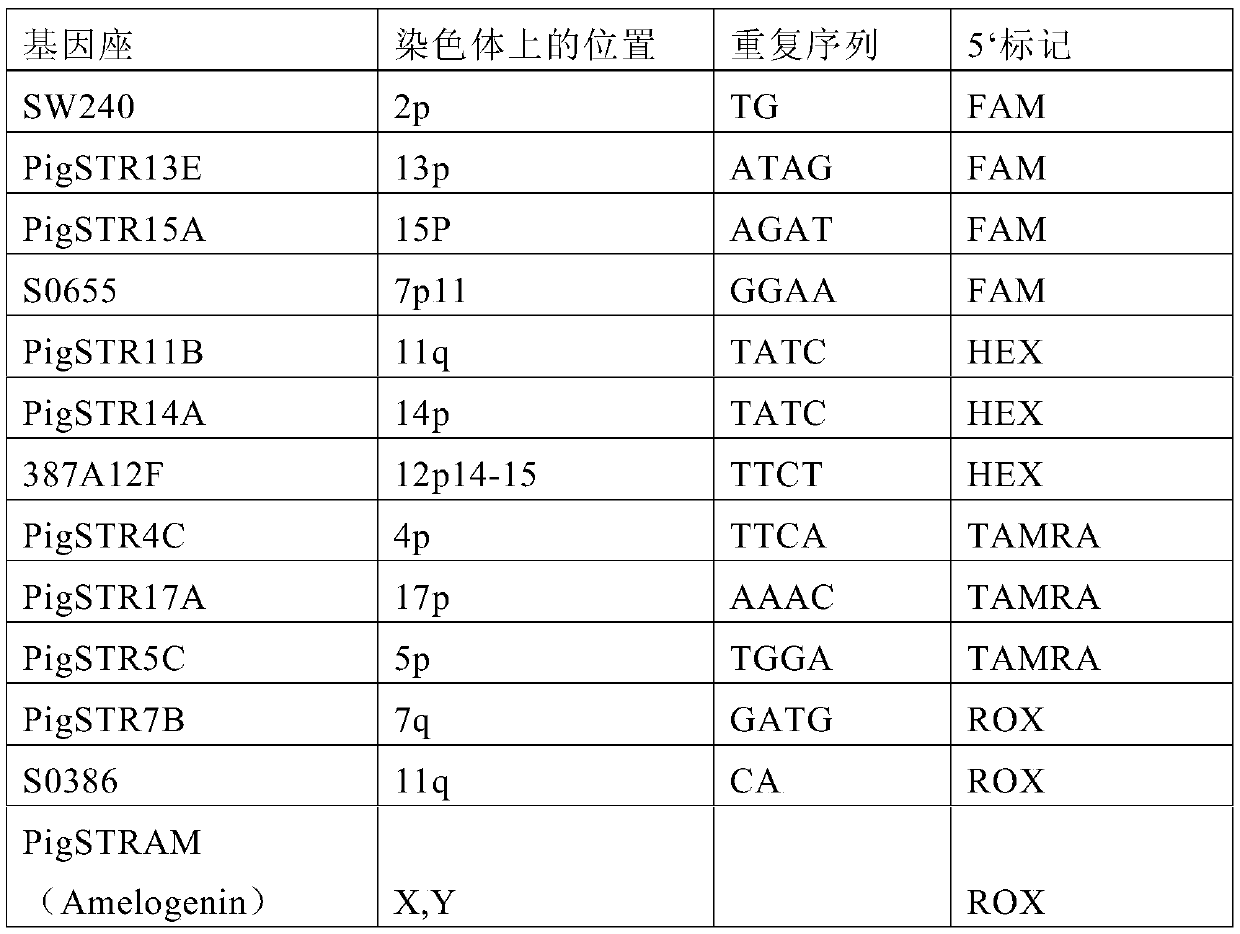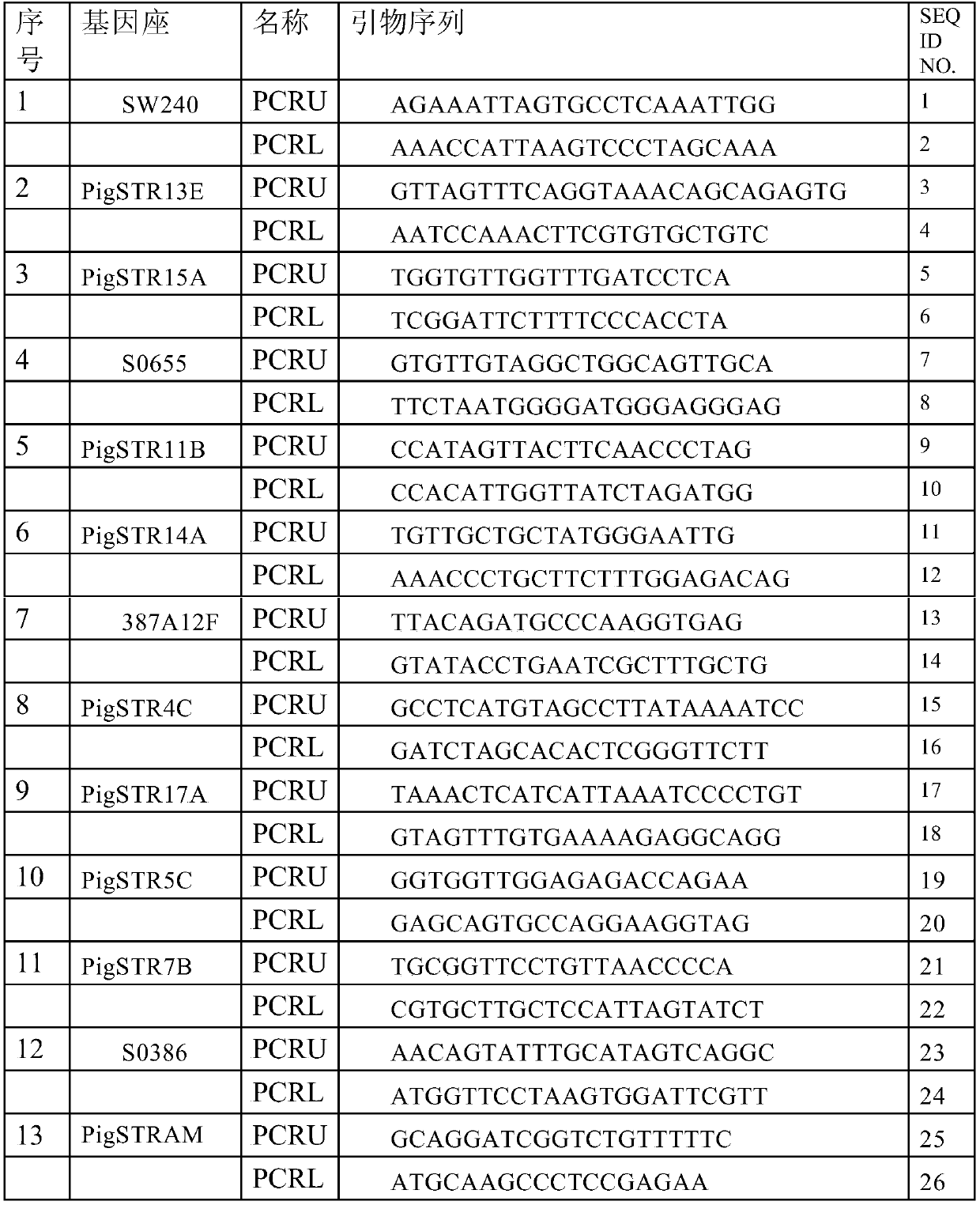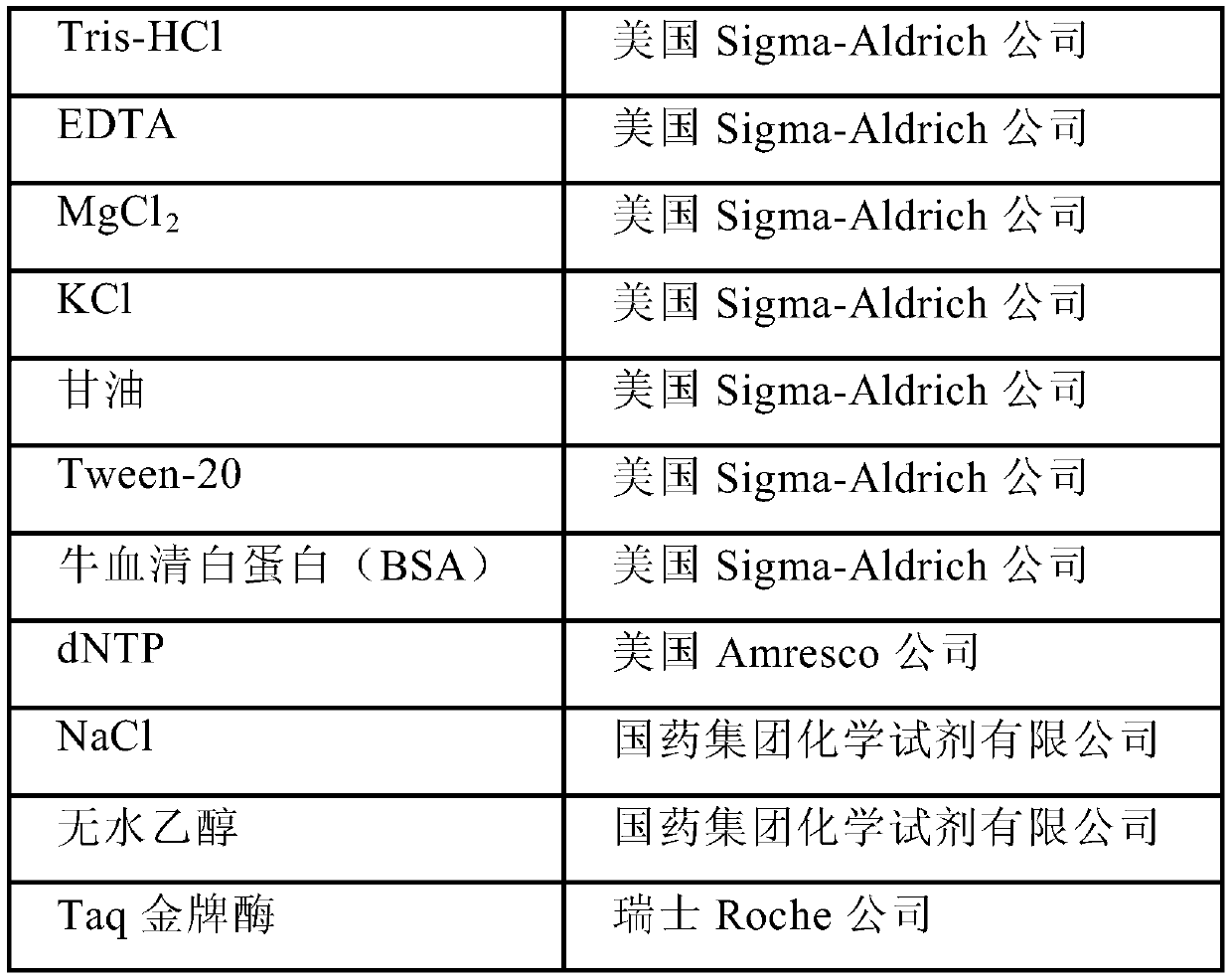A method and system for individual identification and paternity testing of unknown pig samples
A technology of paternity identification and material inspection, which is applied in the direction of biochemical equipment and methods, microbial measurement/inspection, etc., and can solve the problems of poor cumulative individual recognition rate, poor genetic polymorphism of loci, serious problems, etc.
- Summary
- Abstract
- Description
- Claims
- Application Information
AI Technical Summary
Problems solved by technology
Method used
Image
Examples
Embodiment 1
[0047] Example 1. Verification of the accuracy of the method and system for individual identification and paternity identification of unknown pig samples of the present invention
[0048] In this example, the unknown pig samples are 100 pig anticoagulant blood samples (53 males and 47 females), whose individual sources are known, but their individual sources are set during the implementation of Example 1 of the present application. The source is unknown, and the method and system of this application are used for individual identification and paternity identification, including:
[0049] 1) Using the DNA extraction system in the system of the present invention to extract DNA from unknown pig samples, 2) Using the composite detection system in the system of the present invention to obtain the DNA including 12 autosomal STR loci and sex-determining loci PigSTRAM 3) use the deduction system described in the system of the present invention to carry out individual identification and p...
Embodiment 2
[0076] Embodiment 2 Analysis of cumulative individual recognition rate and cumulative non-parent exclusion rate of the detection system of the present invention
[0077] Using the system of the present invention to obtain the typing results of 240 unrelated individuals of pigs according to the method described in Example 1, and calculate the individual recognition rate, heterozygosity, and polymorphism of Chinese pigs for 12 autosomal STR loci in these results Information content, non-parent exclusion rate, and match probability.
[0078] Specifically, Powerstats v1.2 software was used to calculate individual recognition rate (DP), heterozygosity (H), polymorphic information content (PIC), non-parent exclusion rate (PE), and matching probability (Pm), as shown in Table 6 below . And the cumulative non-parent exclusion rate and cumulative individual discrimination were calculated according to the following formulas 1-2.
[0079] Table 6
[0080] DP H PIC PE ...
PUM
 Login to View More
Login to View More Abstract
Description
Claims
Application Information
 Login to View More
Login to View More - R&D
- Intellectual Property
- Life Sciences
- Materials
- Tech Scout
- Unparalleled Data Quality
- Higher Quality Content
- 60% Fewer Hallucinations
Browse by: Latest US Patents, China's latest patents, Technical Efficacy Thesaurus, Application Domain, Technology Topic, Popular Technical Reports.
© 2025 PatSnap. All rights reserved.Legal|Privacy policy|Modern Slavery Act Transparency Statement|Sitemap|About US| Contact US: help@patsnap.com



